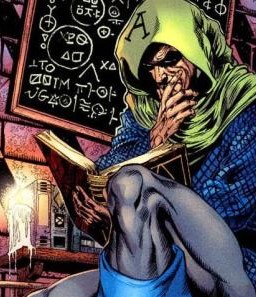

In honor of Flash February I thought discussing one of the most entertaining components of the Flash would be appropriate. If you’ve saw this week’s Top Ten, you caught our list of favorite Rogues and hopefully learned some things. Here I’ll discuss their history, growth, and importance to the Flash…
The Rogues didn’t start out as the Rogues; instead they began as small-time crooks in colorful costumes who operated alone. Likely created as plausible challenges to a man who could run at the speed of sound (and later beyond) each one just had to have a strange weapon/tool to commit crimes. Captain Cold was the first Rogue to face the Flash in Showcase #8 with a gun that could seemingly project ice onto any surface. After a while more were introduced with wild outlandish concepts; wands that controlled weather, mirrors that could create lifelike illusions, guns that could transmute elements, tools from the 64th century that could turn people into puppets ect. Eventually, after various pairs teamed-up against the Flash, the idea came to use the most popular Rogues in one story.

Flash #130, listed as the first appearance of Rogues, was written and drawn by John Broome and Carmine Infantion respectively. Here the IDEA of the Rogues is floated, but not expanded on until Flash #155 when Gorilla Grodd uses the Rogues (Captain Cold, Mirror Master, The Top, Heatwave, Captain Boomerang, and Pied Piper) to wear down the Flash.

Here begins a long tradition of a gang of villains grouping together to even the odds against the hero, but also firmly plants the seeds for the Rogues. Even though the whole thing was a ruse, I think that they realize when they’re together there is strength in numbers and that they need every advantage against the Flash. The line-ups would change over the decades, members would go straight, die or fall back into old ways; the Rogues and the Flash are almost tied together.

When Geoff Johns took over as writer on the Flash, he took the opportunity to refine and flesh out several parts of the mythos, including the Rogues. He introduced new Rogues for Wally West to face but still kept a core group working in the background (Cold, Weather Wizard, Mirror Master, Trickster). Despite over two dozen Rogues in his run only the group led by Cold is shown as the rightful holders of the title. They operate on a code (1.Never Kill, unless it’s required 2. No Drugs, ever 3.Never Kill a Speedster 4,To become a Rogue, you have to make the Flash sweat) look out for each other and work together. The Rogues face others hoping to climb to the top of chain in Central and Keystone, such as those led by Blacksmith and the Top but still survive the encounters mostly unscathed. Possibly from combined experience or Cold’s deft leadership, his team defeats any and all challengers to the title of The Rogues.

From the start of the New 52 Brian Buccellato kept up this tradition in his own stories. In the New 52 The Rogues become less violent and more removed from the behavior similar to the villains of the rest of the NDCU. They gained their superpowers in leau of gadgets and were less blue-collar while still being average joe-esque. There is a greater emphasis on Cold’s group as a team while Robert Venditti and Van Jenson have downplayed that so far in their run.

“What makes a Rogue?” Anybody operating in the Twin Cities, Central or Keystone, can be a Rogue if they can face off against the Fastest Man Alive and provide a challenge. Having a gimmick is not necessarily required, but it sure helps. Being successful is also not entirely necessary; Rogues like Pied Piper and Zoom were content to test the Flash rather than steal valuables. Some like Abra Kadabra saw the Flash as an obstacle to fame. Others like Gorilla Grodd and Reverse-Flash merely wish to destroy the Flash in body or spirit. No one can still steal the shtick of a previous Rogue as long as they’re alive (although Axel Walker became the second Trickster while James Jesse was retired). Perhaps the most serious rule the Rogues have is, “Never Kill a Speedster” The implications of that are monumental; this assumes that they COULD kill someone like the Flash and that if they could they should avoid it. Besides Inertia/Kid Zoom and Bart Allen, I cannot recall any of the Rogues crossing that line.
Some will claim that the Rogues are corny villains or too “silly” to be taken seriously. If you can take a short, chubby man with an umbrella calling themselves “Penguin” or a murderous sociopath dressed like a clown called “The Joker” there’s probably nothing I can say to dissuade you that the Rogues are silly. Here is what is cool about the Rogues; they don’t care. They’ve been doing this since the late Fifties, in costumes as crazy back then as they are today. The Rogues know what they are and keep at it. The Flash needs them and they need the Flash and it is tough to decide who needs each other more. But what is remarkable about the Rogues is that they have very basic wants (money, fame, revenge, fun) but use unconventional methods to attain them. If they fail, they are back at it as soon as they get the chance.
When your enemy is someone like the Flash you can’t stop and worry what people think of you. You’re always too busy trying to stay a step ahead.









